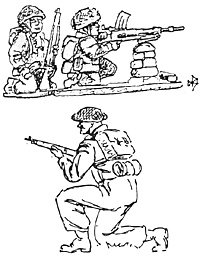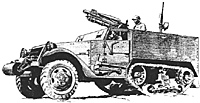 After a great deal of thought I decided a while back to move to a tabletop game system which involves having a hexagonal grid superimposed on the terrain. To begin with I felt very unsure about whether or not this was a good idea. What if it didn’t work or I didn’t like it? Common sense prevailed. My tabletop is a sheet of chipboard. If, after I had painted the base colour and imposed the grid, I thought it was a disaster all I had to do was turn it over! I was spurred on by two articles in Practical Wargamer. One was by John Bennett, which was all about War Chess, something I had never heard of before. The other was by someone called Clive Lane. He explained how his club had moved over to this terrain system and the benefits that had accrued.
After a great deal of thought I decided a while back to move to a tabletop game system which involves having a hexagonal grid superimposed on the terrain. To begin with I felt very unsure about whether or not this was a good idea. What if it didn’t work or I didn’t like it? Common sense prevailed. My tabletop is a sheet of chipboard. If, after I had painted the base colour and imposed the grid, I thought it was a disaster all I had to do was turn it over! I was spurred on by two articles in Practical Wargamer. One was by John Bennett, which was all about War Chess, something I had never heard of before. The other was by someone called Clive Lane. He explained how his club had moved over to this terrain system and the benefits that had accrued.
Having decided to go ahead I then had to sort out what size of grid I wanted. Just about all the rules I have give a basic infantry move of six inches or 150 mm so I decided to go for that as the basic size. It then took me a while to make up a template that size but eventually I got there. The chipboard was painted up and I drew my hexagonal grid on the top using a marker pen to draw around the template.
Once the basic table was finished I sorted out some terrain pieces. The hills were made out of insulating board and the trees were simply stuck on to hexagonal bases. Rivers are made out of blue card. Roads and tracks are painted on to hardboard hexes. Once the hard work had been done - and it did take some time - the overall effect was quite pleasing. It also means I now have a large number of options when setting up a table layout. I can have rugged hilly terrain covered in forest if I want to. All the trees stay upright because they sit on a flat surface, but the effect of the hill/mountain is there as different layers of insulating boards are laid on top of one another. I can have rivers one, two, three or more hexes wide. All I need is the correct number of blue coloured hexes.
 I have converted my rule systems to fit with the hexagonal terrain and the whole package seems to work extremely well. I offer a WW2 game Patrol by way of example. Very little of what I use in terms of game mechanisms are original, they have usually come from other commercially available games, rule sets or from ideas published in Lone Warrior. Patrol uses the movement system from the board game Ambush! Weapon ranges are taken from Rapid Fire! and converted to conform to my hexagonal terrain. The command and control system is from the SWA Beginners Pack. To play Patrol you will need hexagonal terrain(!) a number of dice and plenty of card.
I have converted my rule systems to fit with the hexagonal terrain and the whole package seems to work extremely well. I offer a WW2 game Patrol by way of example. Very little of what I use in terms of game mechanisms are original, they have usually come from other commercially available games, rule sets or from ideas published in Lone Warrior. Patrol uses the movement system from the board game Ambush! Weapon ranges are taken from Rapid Fire! and converted to conform to my hexagonal terrain. The command and control system is from the SWA Beginners Pack. To play Patrol you will need hexagonal terrain(!) a number of dice and plenty of card.
In Patrol incidents take place on a throw of 7+ on 2D6. Make up a number of cards for possible incidents. Some of my cards have things like “Reinforcements: MMG section”; “Enemy Squad”; “Relax, there’s nothing there.” Include a couple that say “Sniper” and “Minefield.” Make up as many different cards as you like. I tend to have 2:1 ratio of cards with an incident to those like the “Relax...” card. It’s your game, do what you want!
Back to Table of Contents -- Lone Warrior # 143
Back to Lone Warrior List of Issues
Back to MagWeb Magazine List
© Copyright 2003 by Solo Wargamers Association.
This article appears in MagWeb.com (Magazine Web) on the Internet World Wide Web.
Other military history articles and gaming articles are available at http://www.magweb.com
